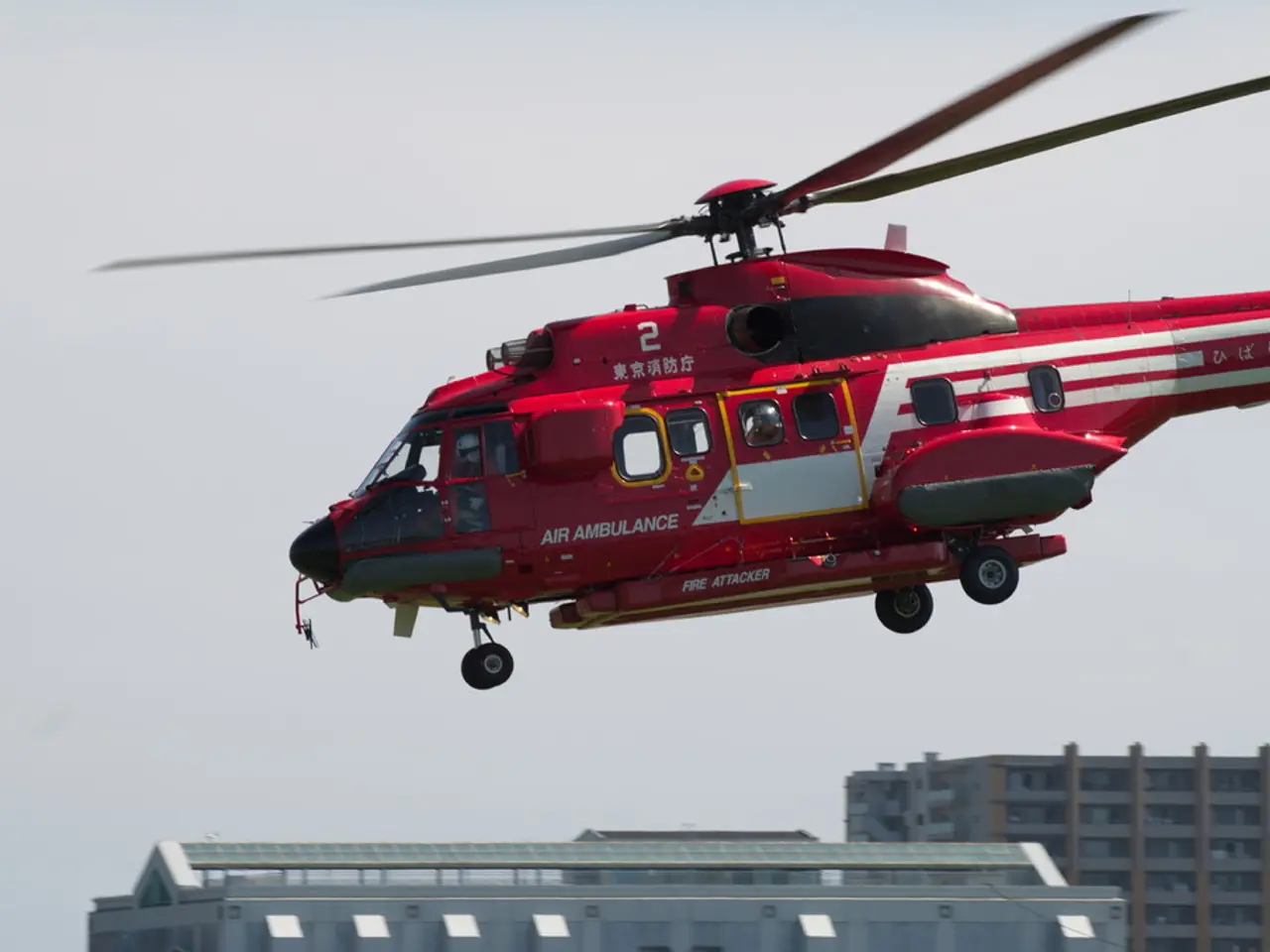Drone Swarm Technology utilized for crisis communication systems in emergencies
In the realm of emergency response, a promising development is the investment in Artificial Intelligence (AI) and autonomy for future drones, designed to operate effectively in disrupted environments. These drones, operating in swarms, are poised to revolutionise emergency communication networks, particularly in disaster scenarios and war-torn regions.
The key applications of drone swarm technology in these contexts are manifold. Swarms can self-organize to form ad-hoc communication relay networks, extending connectivity into remote or infrastructure-damaged areas. This enables continuous communication for first responders and affected populations where terrestrial networks are down or unavailable.
Moreover, drone swarms can rapidly gather and relay real-time information on hazards, victims, and evolving conditions such as wildfires or conflict zones. They can also act as dynamic aerial base stations, providing cellular coverage or bridging communications between ground units and command centers.
However, deploying drone swarm communication networks in these contexts is not without challenges. Communication reliability and bandwidth limits, latency and real-time control constraints, network congestion and interference management, power and endurance limitations, public perception and regulatory hurdles are all factors that need to be addressed.
Balancing resilience, coverage, power consumption, and routing complexity in dynamic aerial topologies is a technical challenge, as is maintaining low latency for command and control in large, mobile swarms over long distances. As the swarm size grows, exponential increases in network traffic congestion and RF interference arise, complicating spectrum allocation and resource scheduling, especially in crowded or hostile environments.
UAVs in swarms have limited battery life, which impacts network availability and performance during prolonged emergency responses. Skepticism and concerns about privacy, militarization, and airspace safety pose social and policy barriers to adopting drone swarms broadly in emergency management.
Despite these challenges, the potential benefits of drone swarms in emergency communication networks are significant. They offer rapid, resilient communication solutions in disasters and conflict zones, enabling autonomous, distributed coverage and real-time data relay. The use of AI and machine vision in drones for countering electronic warfare interference is a promising development for maintaining communication links in disrupted environments.
To ensure resilience, emergency networks should integrate multiple communication pathways, such as Starlink, mobile networks, and mesh networks. Off-the-shelf commercial drones can be adapted for emergency communications, reducing costs and deployment times. Advances in battery technology, solar and wireless charging systems, and AI-driven optimization could extend operational times for communication drones.
In summary, while the deployment of drone swarm communication networks in emergency scenarios presents technical and social challenges, their transformative potential for rapid, resilient communication networks is undeniable. The integration of AI, machine vision, and multi-path communication systems offers a promising future for emergency communication networks in disasters and conflict zones.
Drone swarm technology, powered by AI, can sustainably contribute to the environment by providing resilient communication networks in disrupted environments such as disaster scenarios and war-torn regions. This technology, with its capability to form ad-hoc communication relay networks, can extend connectivity and provide real-time information, acting as dynamic aerial base stations, even in the presence of challenges like communication reliability and power limitations.




